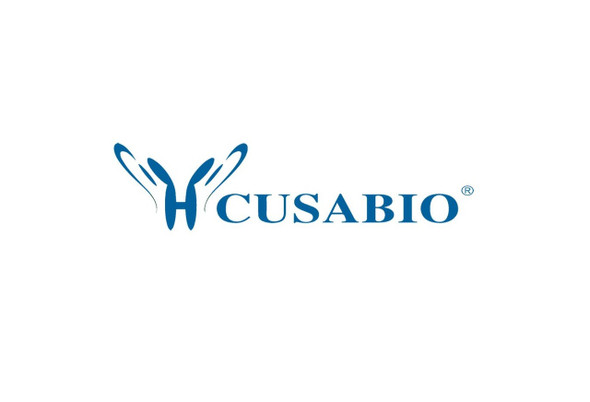Cusabio Escherichia coli Recombinants
Recombinant Escherichia coli Periplasmic serine endoprotease DegP (degP) | CSB-YP314631ENV
- SKU:
- CSB-YP314631ENV
- Availability:
- 3 - 7 Working Days
Description
Recombinant Escherichia coli Periplasmic serine endoprotease DegP (degP) | CSB-YP314631ENV | Cusabio
Alternative Name(s): Heat shock protein DegPProtease Do
Gene Names: degP
Research Areas: Others
Organism: Escherichia coli (strain K12)
AA Sequence: AETSSATTAQQMPSLAPMLEKVMPSVVSINVEGSTTVNTPRMPRNFQQFFGDDSPFCQEGSPFQSSPFCQGGQGGNGGGQQQKFMALGSGVIIDADKGYVVTNNHVVDNATVIKVQLSDGRKFDAKMVGKDPRSDIALIQIQNPKNLTAIKMADSDALRVGDYTVAIGNPFGLGETVTSGIVSALGRSGLNAENYENFIQTDAAINRGNSGGALVNLNGELIGINTAILAPDGGNIGIGFAIPSNMVKNLTSQMVEYGQVKRGELGIMGTELNSELAKAMKVDAQRGAFVSQVLPNSSAAKAGIKAGDVITSLNGKPISSFAALRAQVGTMPVGSKLTLGLLRDGKQVNVNLELQQSSQNQVDSSSIFNGIEGAEMSNKGKDQGVVVNNVKTGTPAAQIGLKKGDVIIGANQQAVKNIAELRKVLDSKPSVLALNIQRGDSTIYLLMQ
Source: Yeast
Tag Info: N-terminal 6xHis-tagged
Expression Region: 27-474aa
Sequence Info: Full Length of Mature Protein
MW: 48.8 kDa
Purity: Greater than 90% as determined by SDS-PAGE.
Relevance: DegP acts as a chaperone at low tperatures but switches to a peptidase (heat shock protein) at higher tperatures. It degrades transiently denatured and unfolded proteins which accumulate in the periplasm following heat shock or other stress conditions. DegP is efficient with Val-Xaa and Ile-Xaa peptide bonds, suggesting a preference for beta-branched side chain amino acids. Only unfolded proteins devoid of disulfide bonds appear capable of being cleaved, thereby preventing non-specific proteolysis of folded proteins. Its proteolytic activity is essential for the survival of cells at elevated tperatures. It can degrade IciA, ada, casein, globin and PapA. DegP shares specificity with DegQ. DegP is also involved in the biogenesis of partially folded outer-mbrane proteins (OMP).
Reference: Sequence of minutes 4-25 of Escherichia coli.Chung E., Allen E., Araujo R., Aparicio A.M., Davis K., Duncan M., Federspiel N., Hyman R., Kalman S., Komp C., Kurdi O., Lew H., Lin D., Namath A., Oefner P., Roberts D., Schramm S., Davis R.W. The complete genome sequence of Escherichia coli K-12.Blattner F.R., Plunkett G. III, Bloch C.A., Perna N.T., Burland V., Riley M., Collado-Vides J., Glasner J.D., Rode C.K., Mayhew G.F., Gregor J., Davis N.W., Kirkpatrick H.A., Goeden M.A., Rose D.J., Mau B., Shao Y.Science 277:1453-1462(1997)
Storage: The shelf life is related to many factors, storage state, buffer ingredients, storage temperature and the stability of the protein itself. Generally, the shelf life of liquid form is 6 months at -20?/-80?. The shelf life of lyophilized form is 12 months at -20?/-80?.
Notes: Repeated freezing and thawing is not recommended. Store working aliquots at 4? for up to one week.
Function: DegP acts as a chaperone at low temperatures but switches to a peptidase (heat shock protein) at higher temperatures
Involvement in disease:
Subcellular Location: Cell inner membrane, Peripheral membrane protein, Cytoplasmic side
Protein Families: Peptidase S1C family
Tissue Specificity:
Paythway:
Form: Liquid or Lyophilized powder
Buffer: If the delivery form is liquid, the default storage buffer is Tris/PBS-based buffer, 5%-50% glycerol. If the delivery form is lyophilized powder, the buffer before lyophilization is Tris/PBS-based buffer, 6% Trehalose, pH 8.0.
Reconstitution: We recommend that this vial be briefly centrifuged prior to opening to bring the contents to the bottom. Please reconstitute protein in deionized sterile water to a concentration of 0.1-1.0 mg/mL.We recommend to add 5-50% of glycerol (final concentration) and aliquot for long-term storage at -20?/-80?. Our default final concentration of glycerol is 50%. Customers could use it as reference.
Uniprot ID: P0C0V0
HGNC Database Link: N/A
UniGene Database Link: N/A
KEGG Database Link: KEGG
STRING Database Link: STRING
OMIM Database Link: N/A









